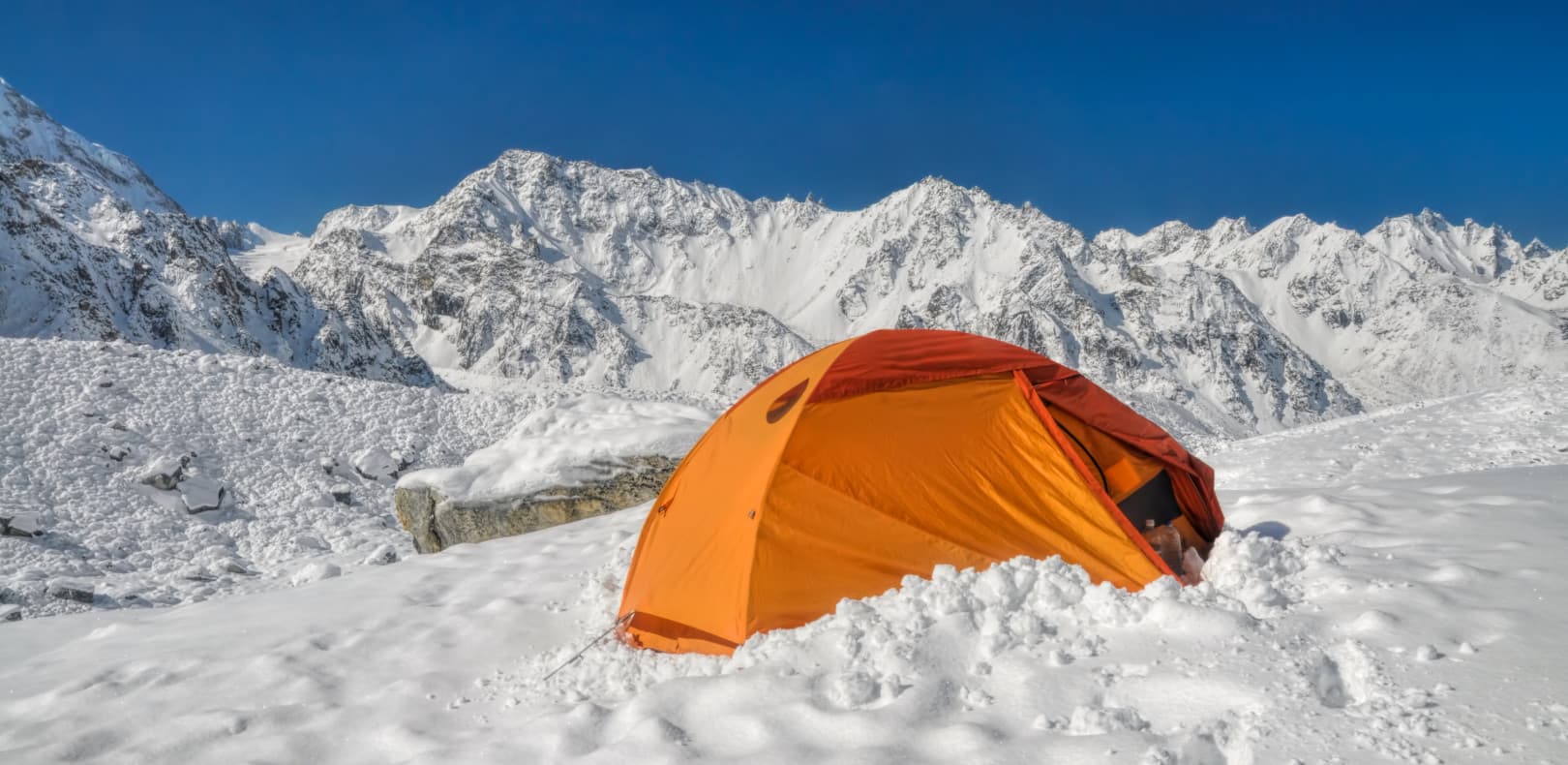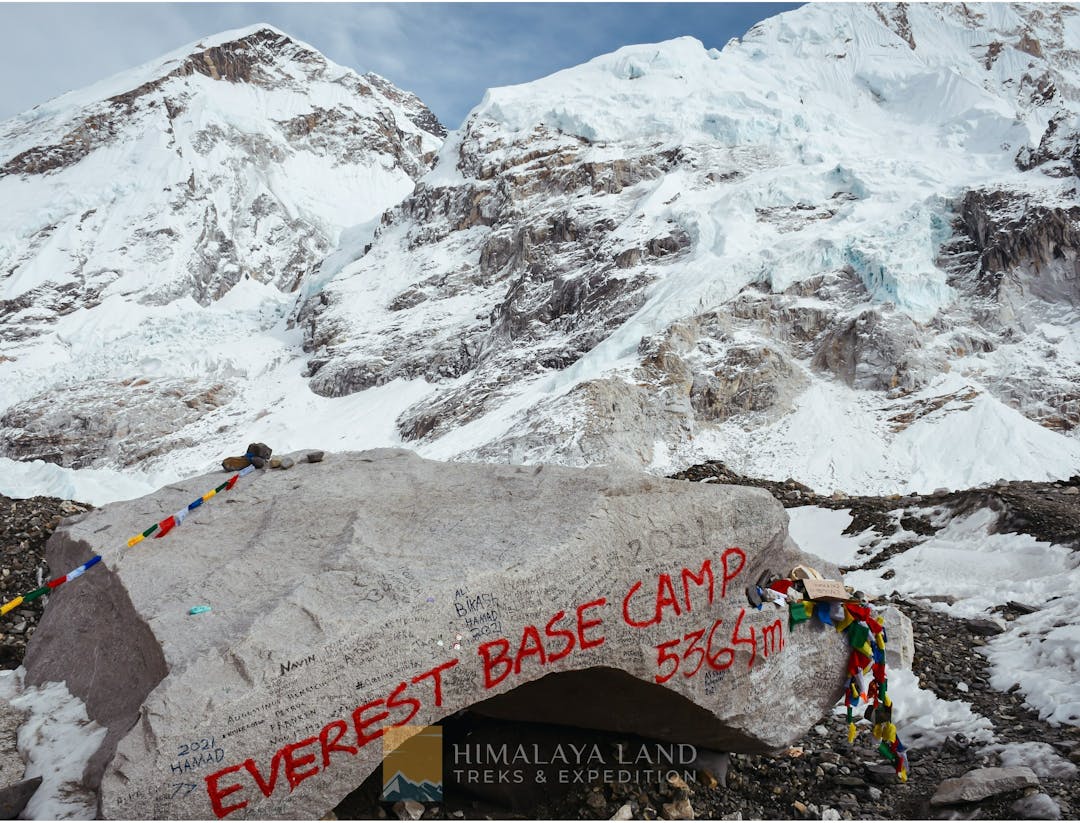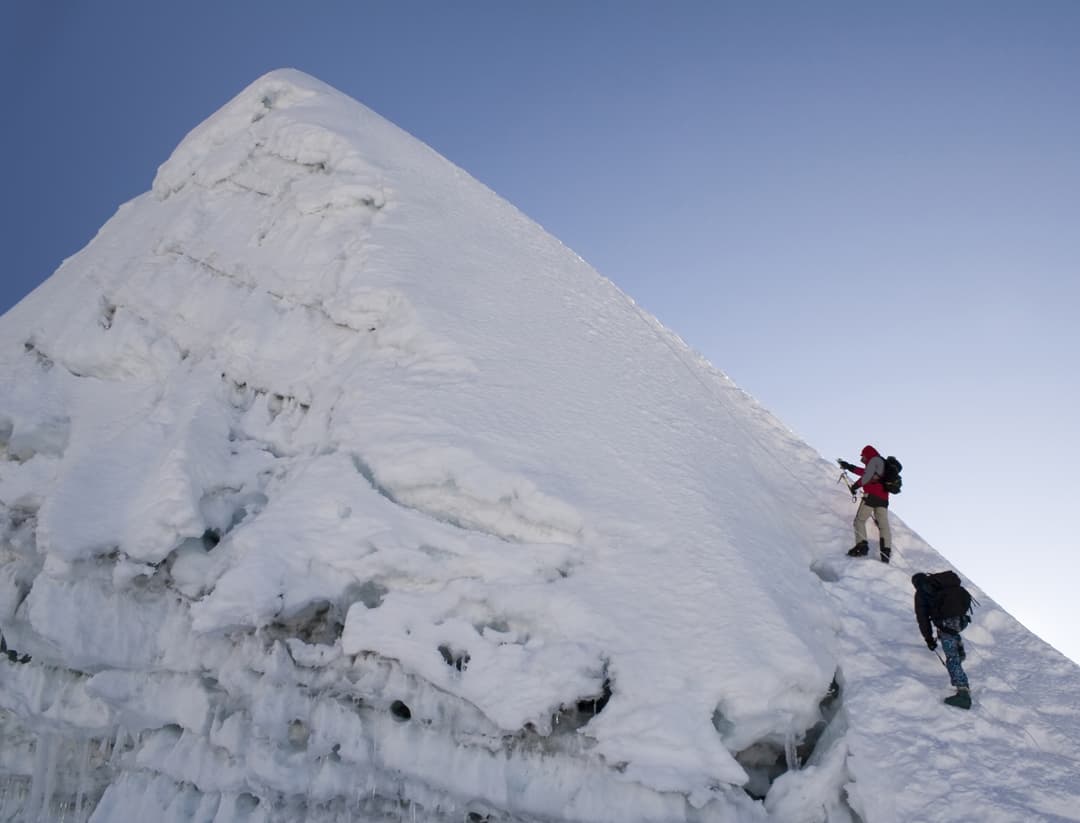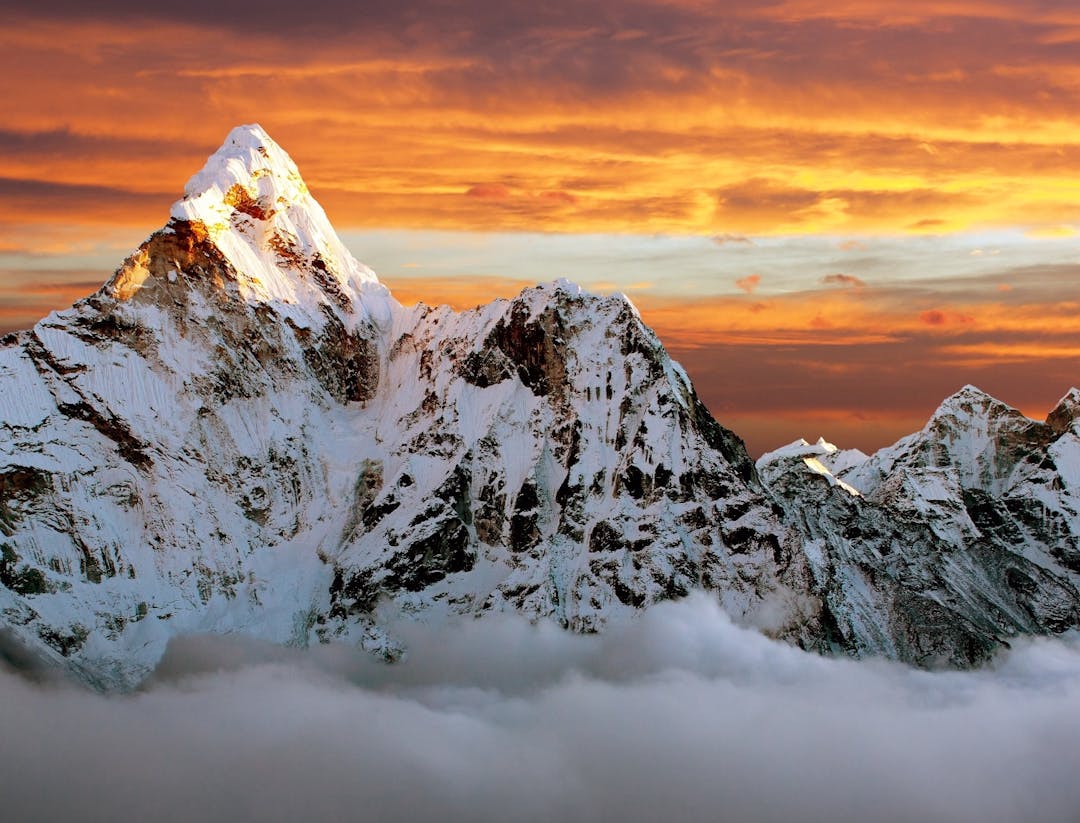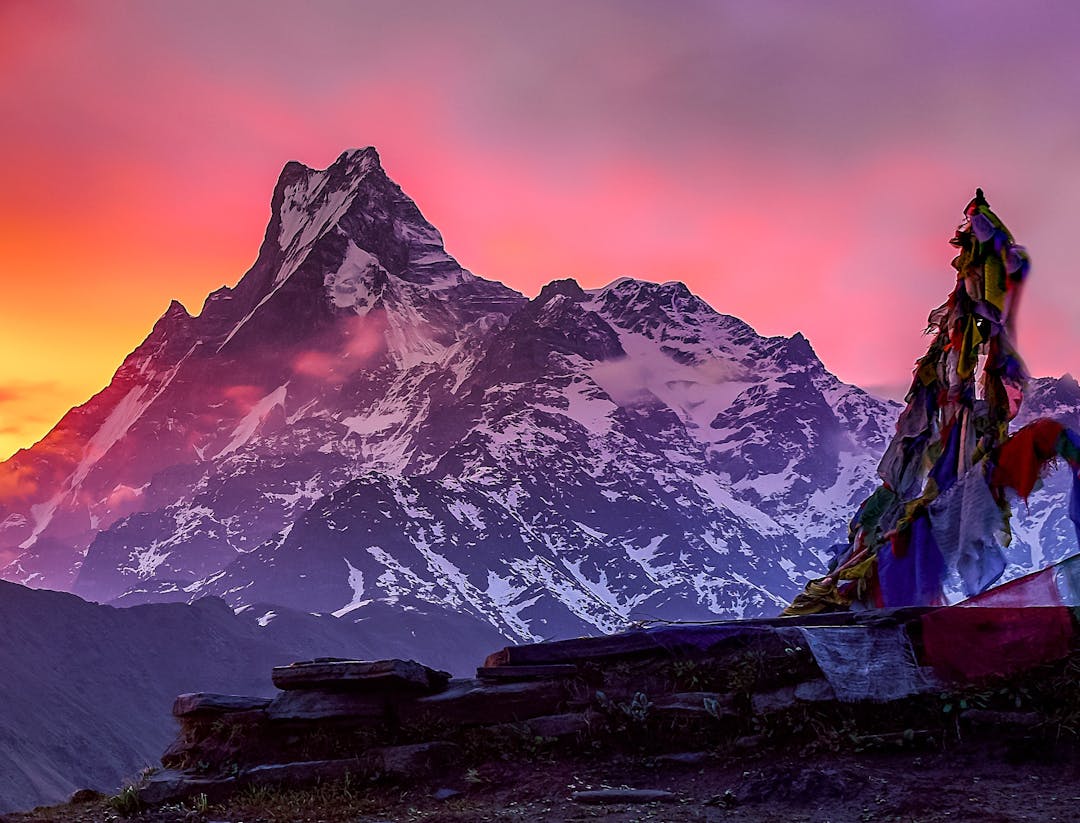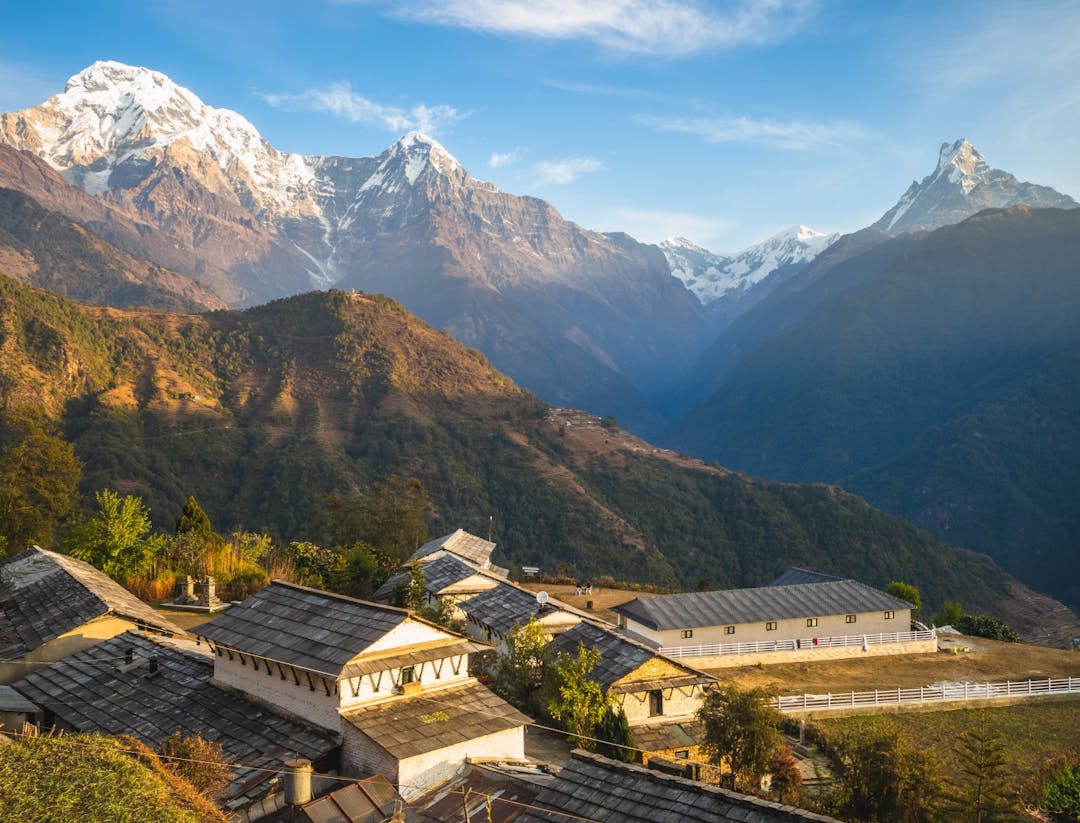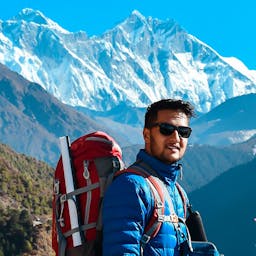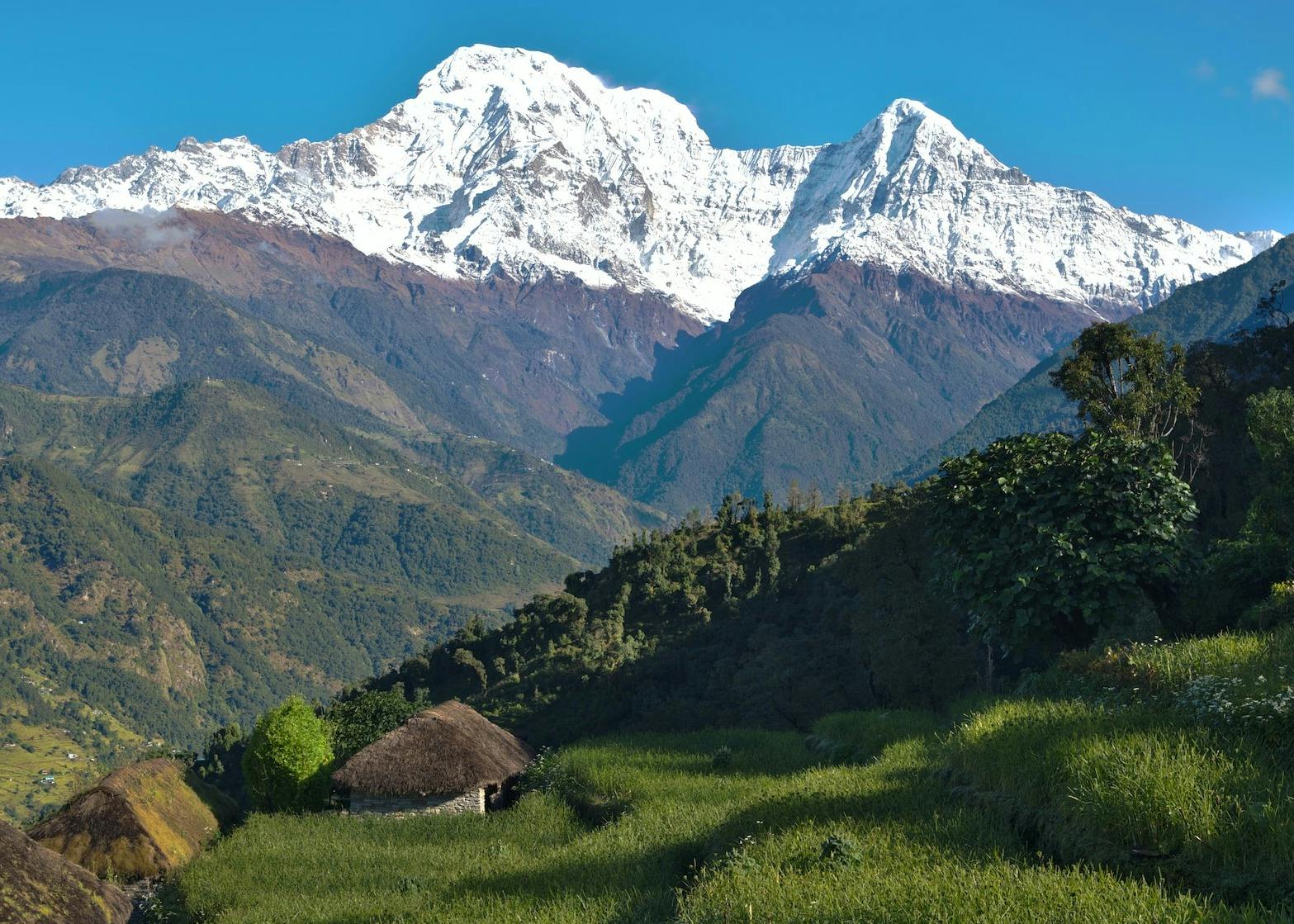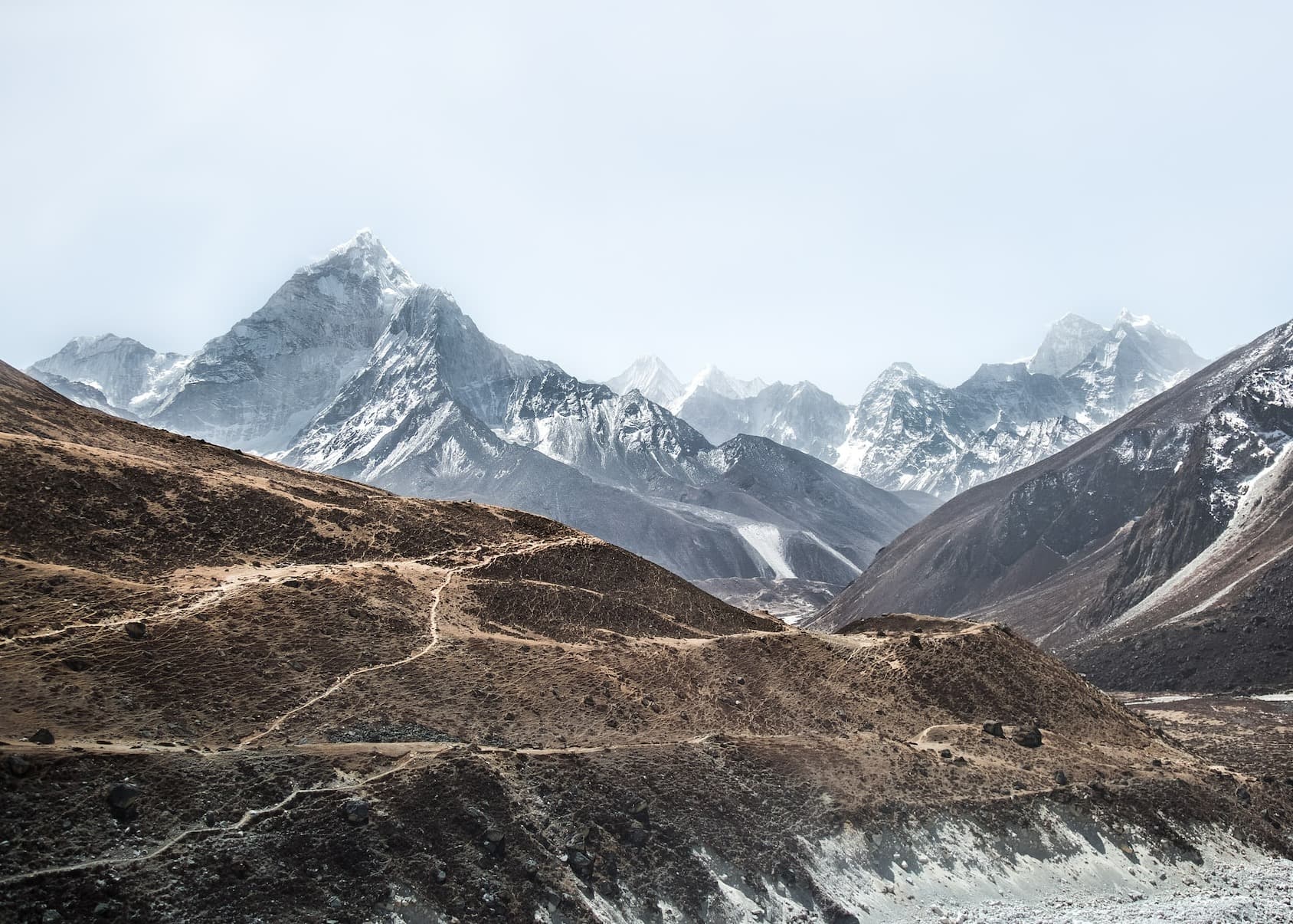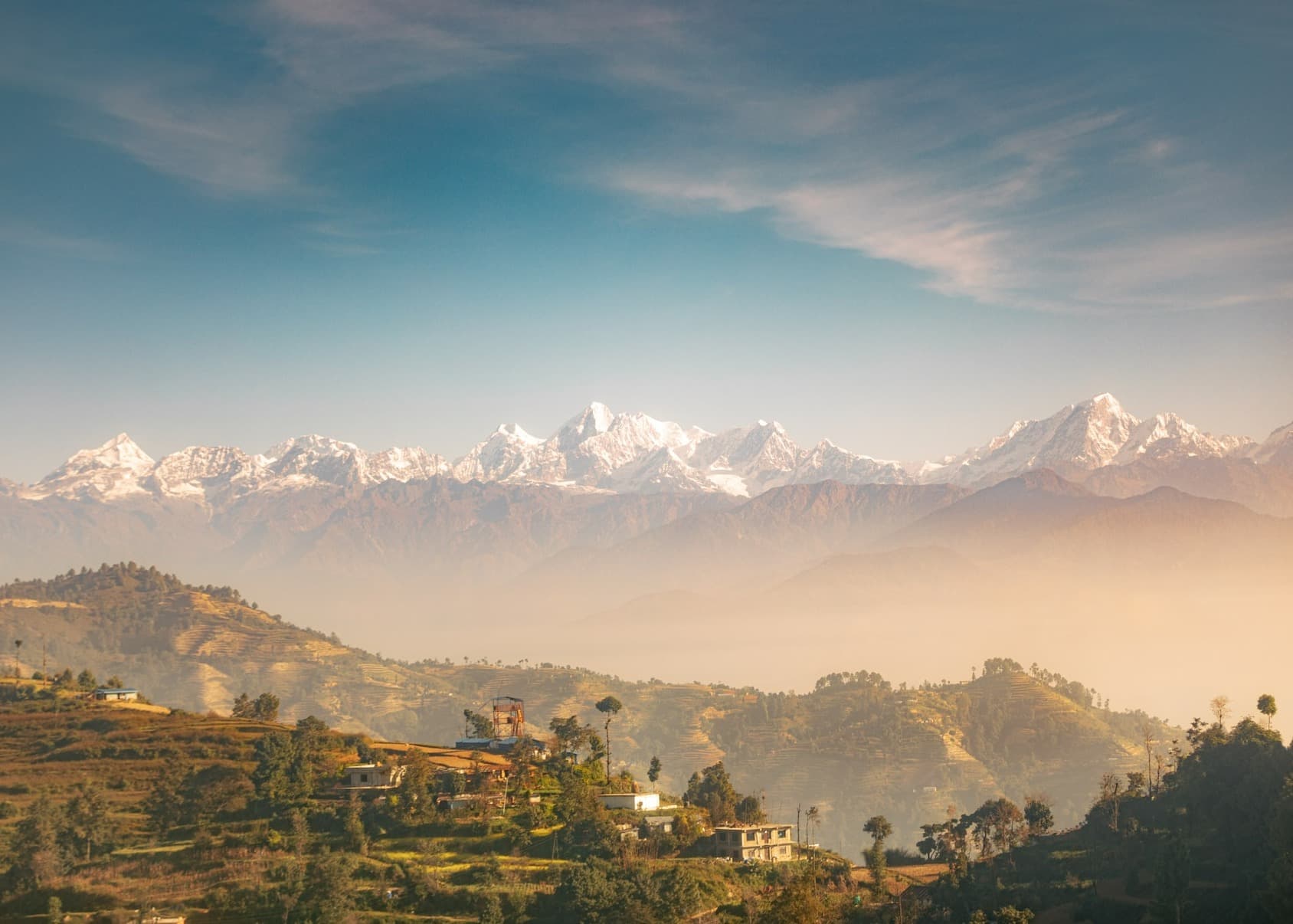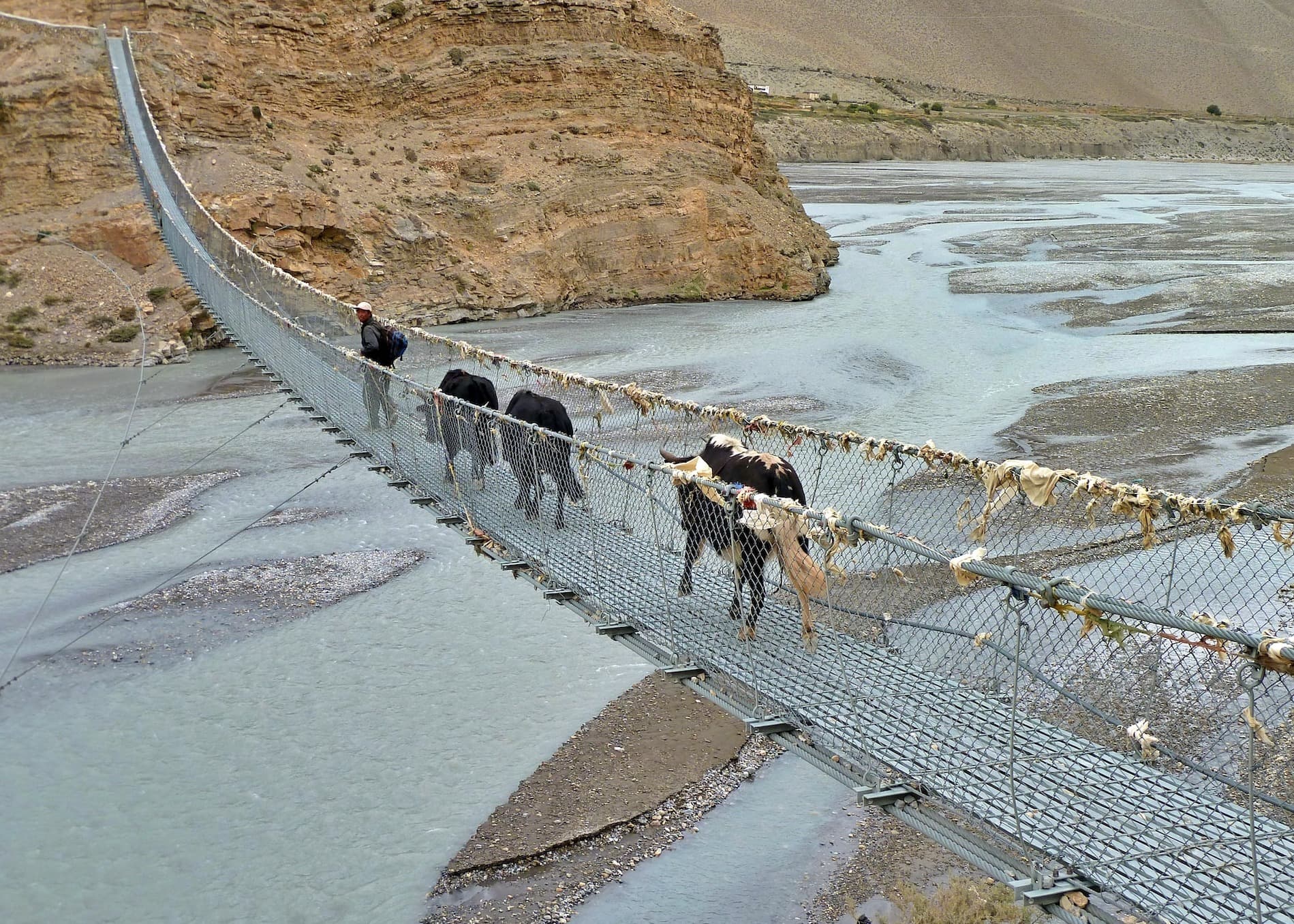- Itinerary
- Permits and fees:
- Fitness and preparation:
- Accommodation and food:
- Altitude sickness:
- Culture and etiquette:
- Difficulty level of Kanchenjunga trek
- What are the major attraction of kanchenjunga Base Camp Trek?
- Wi-Fi, Mobile Network and Electricity in Kanchenjunga trek
- How to Prepare for Your Kanchenjunga Base Camp Trek?
- Banking ATMs and money in Kanchenjunga trek
Kanchenjunga is the third-highest mountain in the world, located on the border between Nepal and India. Trekking to its base camp is a challenging and rewarding experience that offers stunning views of the mountain and its surrounding landscape.
The trek to Kanchenjunga Base Camp usually takes around three weeks and involves hiking through remote villages, dense forests, and alpine meadows. Along the way, trekkers can experience the unique culture and traditions of the local people, who are mostly of Tibetan origin.
Trekking to Kanchenjunga Base Camp is a challenging and rewarding experience that takes you through some of the most beautiful and remote regions of the Himalayas. Kanchenjunga Base Camp Trek is a challenging and off-the-beaten-path trekking experience in the remote regions of Eastern Nepal. Here is some more information to help you plan your trek:
Getting there:
The journey to Kanchenjunga Base Camp starts with a flight from Kathmandu to Biratnagar, followed by a drive to Taplejung. From Taplejung, the trekking route takes you through several villages and up to the base camp.
Itinerary
The Kanchenjunga trek usually takes around 20-25 days to complete. Here's a sample itinerary:
Day 1: Arrive in Kathmandu
Day 2: Fly to Biratnagar and drive to Taplejung
Day 3: Trek to Mitlung
Day 4: Trek to Chirwa
Day 5: Trek to Sukathum
Day 6: Trek to Amjilosa
Day 7: Trek to Gyabla
Day 8: Rest day at Gyabla
Day 9: Trek to Ghunsa
Day 10: Rest day at Ghunsa
Day 11: Trek to Kambachen
Day 12: Rest day at Kambachen
Day 13: Trek to Lhonak
Day 14: Trek to Pangpema
Day 15: Rest day at Pangpema
Day 16: Trek to Kambachen
Day 17: Trek to Ghunsa
Day 18: Trek to Sele La
Day 19: Trek to Tseram
Day 20: Trek to Ramche
Day 21: Trek to Tortong
Day 22: Trek to Yamphudin
Day 23: Trek to Khebang
Day 24: Drive to Biratnagar and fly back to Kathmandu
Day 25: Depart from Kathmandu
Permits and fees:
To trek in the Kanchenjunga region, you'll need a special permit, which can be obtained through a trekking agency or directly from the Nepali government. There is also an entrance fee for the Kanchenjunga Conservation Area.
Weather and best time to go:
The best time to trek to Kanchenjunga Base Camp is in the autumn (September to November) or spring (March to May), when the weather is dry and clear. However, be prepared for cold temperatures and the possibility of snowfall, even in these seasons.
Fitness and preparation:
The trek to Kanchenjunga Base Camp is physically demanding, with steep ascents and descents, high altitude, and rough terrain. You should be in good physical condition and be prepared to walk for 6-8 hours a day. It's recommended to engage in regular exercise and endurance training leading up to your trip.
Accommodation and food:
There are teahouses and lodges along the trekking route that provide basic accommodation and food. However, the availability and quality of accommodation can vary, and you should be prepared for basic facilities and communal bathrooms.
Altitude sickness:
The Kanchenjunga trek involves hiking at high altitudes, which can lead to altitude sickness. It's important to acclimatize properly by gradually ascending and taking rest days. You should also be prepared to recognize and manage symptoms of altitude sickness.
Culture and etiquette:
The Kanchenjunga region is home to several ethnic groups, including Sherpas, Limbus, and Tibetans, each with their own unique culture and traditions. As a visitor, it's important to be respectful and mindful of local customs and etiquette. Ask permission before taking photographs of people, dress modestly, and avoid displaying public affection.
Trekking to Kanchenjunga Base Camp is a challenging but rewarding adventure that takes you through some of the most stunning and remote regions of the Himalayas. With proper preparation and a sense of adventure, you can successfully reach the base camp and take in the breathtaking beauty of Kanchenjunga.
Difficulty level of Kanchenjunga trek
The Kanchenjunga trek is considered to be a difficult trek, suitable for experienced trekkers who are physically fit and have previous experience trekking at high altitudes. The trek involves steep ascents and descents, and the trail is often rough and rocky. The trekking route includes a few high passes that are above 4,500 meters, which can be physically demanding and challenging.
Additionally, the trek is quite remote, and the trail is not well-established, which can make the trek more challenging. The trek passes through some of the most isolated regions of Nepal, and the trail can be challenging to navigate in places, requiring experienced guides.
Another factor that makes the Kanchenjunga trek difficult is the altitude. The trek takes you to high altitudes above 5,000 meters, which can cause altitude sickness in some trekkers. It's essential to take the necessary precautions to prevent altitude sickness and acclimatize properly.
In summary, the Kanchenjunga trek is a challenging trek that requires physical fitness, trekking experience, and proper preparation. However, with the right training, equipment, and support, the Kanchenjunga trek can be a rewarding and unforgettable adventure.
What are the major attraction of kanchenjunga Base Camp Trek?
The Kanchenjunga Base Camp Trek is one of the most scenic and adventurous treks in Nepal. Here are some of the major attractions of the Kanchenjunga Base Camp Trek:
Spectacular Mountain Views: Kanchenjunga is the third highest mountain in the world and is the main attraction of the trek. Throughout the trek, you'll have incredible views of the Kanchenjunga mountain range, which includes several other peaks above 7,000 meters.
Cultural Experience: The Kanchenjunga region is home to several ethnic groups, including the Limbu and Rai people, who have a unique culture and way of life. You'll have the opportunity to visit traditional villages, monasteries, and learn about their customs and traditions.
Wildlife: The Kanchenjunga region is home to a wide variety of flora and fauna, including endangered species like the snow leopard, Himalayan black bear, red panda, and musk deer. You'll have the opportunity to see these animals and other wildlife in their natural habitat.
Remote and Off-the-Beaten-Path: The Kanchenjunga Base Camp Trek is a remote and less-visited trekking route, which means you'll have a chance to experience the natural beauty and peacefulness of the region without the crowds.
High Altitude Passes: The Kanchenjunga Base Camp Trek includes several high altitude passes, including the Sele La Pass and Sinelapche La Pass. These passes offer spectacular views and a challenging trekking experience.
Overall, the Kanchenjunga Base Camp Trek is a great option for those looking for an off-the-beaten-path trek with stunning mountain views, a unique cultural experience, and a chance to see rare wildlife.
Wi-Fi, Mobile Network and Electricity in Kanchenjunga trek
The Kanchenjunga trek is a remote and less-visited trekking route, which means that Wi-Fi, mobile network coverage, and electricity can be limited or nonexistent in some areas. Here are some things you should know about Wi-Fi, mobile network coverage, and electricity in the Kanchenjunga trek:
Wi-Fi: Wi-Fi is not widely available on the trek. Some of the tea houses and lodges in the lower elevations may have Wi-Fi, but the connection can be slow and unreliable. It's best to assume that you won't have access to Wi-Fi for most of the trek.
Mobile Network Coverage: Mobile network coverage is limited on the trek, particularly as you gain altitude. You may have some network coverage in the lower elevations, but it's best to check with your mobile network provider to see if they offer coverage in the Kanchenjunga region. Satellite phones may be available for rent in some villages if you need to make emergency calls.
Electricity: Electricity is available in some of the tea houses and lodges along the trekking route, but it may be limited. Most places use solar power or generators to provide electricity, which may only be available for a few hours in the evening. It's a good idea to bring a portable power bank to charge your devices.
In summary, Wi-Fi, mobile network coverage, and electricity can be limited on the Kanchenjunga trek. It's important to be prepared for this and to bring alternative sources of power and communication, such as a power bank and a satellite phone.
How to Prepare for Your Kanchenjunga Base Camp Trek?
Preparing for the Kanchenjunga Base Camp Trek requires physical fitness, mental preparation, and careful planning. Here are some tips on how to prepare for your Kanchenjunga Base Camp Trek:
Physical Fitness: The Kanchenjunga Base Camp Trek is a challenging trek that involves steep ascents and descents, high altitude passes, and long days of trekking. It's important to have good physical fitness and endurance to complete the trek. You should start training several months before your trek, focusing on cardio exercises such as running, cycling, and hiking, as well as strength training for your legs and core.
Mental Preparation: Trekking in the Kanchenjunga region can be physically and mentally demanding. It's important to mentally prepare yourself for the challenge by reading about the trek, watching documentaries, and talking to experienced trekkers. You should also practice meditation and mindfulness to help you deal with the physical and mental challenges of the trek.
Proper Gear: Having the right gear is crucial for a successful trek. You should invest in good quality trekking gear, including sturdy hiking boots, warm clothing, a sleeping bag, a backpack, and a trekking pole. You should also bring a good quality headlamp, sunglasses, and sunscreen.
Altitude Sickness Prevention: The Kanchenjunga Base Camp Trek takes you to high altitudes, which can cause altitude sickness in some trekkers. To prevent altitude sickness, you should acclimatize properly, stay hydrated, and avoid alcohol and tobacco. It's also a good idea to talk to your doctor about medication to prevent altitude sickness.
Book with Trekking Company: The Kanchenjunga Base Camp Trek is a remote and less-visited trekking route. It's a good idea to hire an experienced guide and porter from the reputable trekking company who can help you to organize the trip very well and navigate the trail, provide support, and carry your gear.
In summary, preparing for the Kanchenjunga Base Camp Trek requires physical fitness, mental preparation, proper gear, altitude sickness prevention, and hiring a guide and porter. With the right preparation and support, the Kanchenjunga Base Camp Trek can be a challenging and rewarding adventure.
Banking ATMs and money in Kanchenjunga trek
The Kanchenjunga trek is a remote and less-visited trekking route, and banking facilities and ATMs are limited in the area. Here are some things you should know about banking, ATMs, and money in the Kanchenjunga trek:
Cash: Cash is the most widely accepted form of payment on the trek. It's recommended to carry enough cash in Nepalese rupees for your entire trek. The cost of food, accommodation, and other services is relatively low in the Kanchenjunga region.
ATMs: There are no ATMs along the Kanchenjunga trekking route. The nearest ATMs are located in Taplejung, the starting point of the trek. It's important to withdraw enough cash before starting the trek. However, be aware that some tea houses and lodges may charge a fee for using their card machines.
Credit Cards: Credit cards are not widely accepted on the Kanchenjunga trek. Some tea houses and lodges may accept credit cards, but it's best to assume that you won't be able to use them. It's also important to note that some places may charge a fee for using credit cards.
Money Exchange: Money exchange facilities are limited in the Kanchenjunga region. It's recommended to exchange your currency into Nepalese rupees before starting the trek, either in Kathmandu or Taplejung.
Safety: It's important to keep your money and valuables safe while on the trek. It's recommended to keep your cash in a money belt or a secure pocket, and to only carry as much cash as you need for each day.
In summary, banking facilities and ATMs are limited in the Kanchenjunga trekking area, and cash is the most widely accepted form of payment. It's recommended to carry enough cash in Nepalese rupees for the entire trek, and to keep your money and valuables safe.
Overall, the Kanchenjunga Base Camp Trek is an unforgettable experience that should be on every adventurer's bucket list. The stunning scenery, challenging trails, and unique cultural experiences make it a must-do for anyone who loves the outdoors. However, it's important to be well prepared and to take the necessary precautions to ensure a safe and enjoyable trek.

